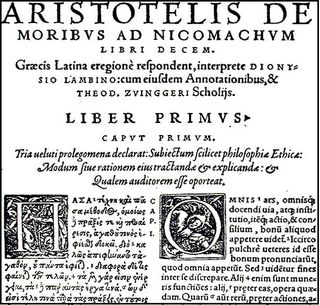By Dr. Ken Broda Bahm –
Aristotle, the original philosopher of communication, wrote in The Nicomachean Ethics about “the Golden Mean, ” or the idea that virtue is often a happy medium between two vices (for example, courage is the virtue wedged between the vices of recklessness on the one hand, and cowardice on the other). More recently, Dennis Elias, an influential voice in the field of trial psychology, wrote in his blog, JuryVox, about current research showing that this thinking also applies to damage requests in litigation: When a requested amount is framed as a reasonable mid-point between two unreasonable extremes, it is more likely to be selected by jurors.
It stands to reason, and even common sense, that such a “middling” process applies to the quantitative act of assigning damages, but psychologically, the same process works in other acts of legal decision making as well. Our adversary system expects advocates to stick to a “my position is best” frame of mind, but decision makers are always implicitly or explicitly asking, “compared to what?” Juxtaposition to the other party is just a binary comparison of “this” or “that,” inviting the jury, judge, or arbitrator to look for a point in between. So the trick is to create your own internal comparison, making your preferred outcome look like a point in between two extremes. That can mean making your damages request look more reasonable by contrasting it with what you’re not asking for, but it can also mean making simple “negligence,” for example, look like the right mid-point between “fraud,” and “getting off Scot free.”
The Research
Rodway, Schepman & Lambert (2011) published in the journal, Applied Cognitive Psychology, a study demonstrating a tendency for test subjects to gravitate toward items placed in the middle of any sequence, whether they are pictures, or numbers, or even socks. “People may not be aware of this preference,” the authors note, “but it may influence choice in a wide range of day-to-day settings, such as the products people buy in shops or via on line shopping, the responses they provide in surveys, and potentially the people they select for a range of tasks or functions.”
We certainly see this tendency in litigation settings. In fact, while mulling over this post in the back of my mind, I was watching live mock juror deliberations, when the following exchange occurred:
Juror 1: I’m not impressed with [the Plaintiff]. He is treating [the Defendant] as one big bank.
Juror 2: Yeah, but [the Defendant] is trying CYA and offering the bare minimum.
Juror 1: We could try to go in between?
Juror 2: Yes, that is where we need to go.
And that is just what the jury did.
The Implications
Apart from the experimental findings, the important question is “why does this work?” I can see two reasons that are both important to legal persuasion. One, for the individual, the middle is more satisfying. It is simply more comfortable to feel like you are avoiding the extremes, and the judgment feels more conservative, independent, prudent, and careful. Two, for the group, the middle is more effective. It helps to accommodate dissent if jurors can listen to a minority viewpoint and say, “yeah, we hear you, and that is why we aren’t taking the extreme.”
So, it is an important consideration when you’re going into court: instead of just adding up reasons for your position, think about how you’re framing your position in light of other alternatives.
- For plaintiffs, consider including a “sacrifice claim,” that you expect jurors to bargain away. While you can’t risk your credibility by pushing a purely artificial claim (which wouldn’t survive summary judgment anyway), you often can include a higher claim that consciously receives less emphasis, just as a way of positioning your main claim as the compromise solution.
- For defendants, think hard about what the most likely fall-back position is in the event that total exoneration is not in the cards. Whether it is a lesser charge, a less important claim, or lower damages, ask yourself how you are paving the way for a middle option.
- For plaintiffs or defendants, ask your damages expert to calculate damages both with and without an assumption that is more friendly to your side. That way, you can talk concretely about what you’re not asking for.
Ultimately, we may not need Aristotle to tell us that “The Golden Mean” is better. Even Goldilocks knows that if it isn’t “too hot,” or “too cold,” then it is “just right.”
______
Related Posts:
- When Arguing Damages, “Drop Anchor” Even in Murky Waters
- Get the Gist of How Jurors Decide Damage Numbers
- A Mixture of Justice and Revenge: Target Juror Psychology in Awarding Damages
______
 Rodway, P.; Schepman, A.; & Lambert, J. (2011). http://onlinelibrary.wiley.com/doi/10.1002/acp.1812/abstract# Applied Cognitive Psychology (July)
Rodway, P.; Schepman, A.; & Lambert, J. (2011). http://onlinelibrary.wiley.com/doi/10.1002/acp.1812/abstract# Applied Cognitive Psychology (July)
Photo Credit: quapan, Flickr Creative Commons
